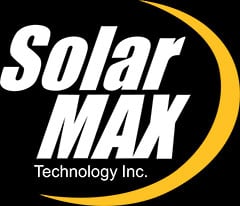Micro Inverters are better than the weakest link!
We all know that a chain is only as strong as the weakest link. Micro inverter technology defies the weakest link statement when it comes to solar arrays. At SolarMax Technology we are proud to offer our customers many choices when it comes to panels and inverters. In the last couple years we have noticed a steady increase in the number of solar array systems we install for our customers being equipped with micro inverters. It seems that they just make sense! We design a custom system for each customer and show each customer the difference in price and production with different equipment. In some instances a central inverter can offer a lower cost, but there usually needs to be a few key factors in play; such as a mostly south facing roof with little to no shading for the panels to be installed on. In that case a central inverter may be the most affordable option.
Micro Inverters come with a slightly steeper initial price tag compared to central inverters, but there are 3 key factors that can more than make up for the initial higher cost. The first is the warranty. Enphase micro inverters come with a 25 year warranty, and have a 50+ year expected life. When compared to central inverters typical 10 year warranty and 12-15 year expected life it makes sense to pay a little more up front to not have to replace equipment down the line. The second reason is production. Central inverters suffer from the "Christmas tree effect" also known as the "weakest link effect". If one panel on a string of panels utilizing a central inverter is shaded, it reduces the output of every other panel on the string. 9% shading on the surface of an array using a central inverter can reduce overall output by as much as 54% according to an article by Ralf Muenster entitled Shade Happens. With micro-inverters the DC power generated by a single panel is converted to AC and is added to the electricity created by each other panel on the string. With micro inverters; if one panel is shaded, it has no effect on the production of any of the other panels. The third key factor is being able to increase the size of your solar array in the future. It is common that homeowners seek to increase the size of their solar array (add panels) at some point in time. Although it seems simple enough to just add some more panels to your system, it is usually not that simple. Typically with a central inverter, to keep initial cost down the inverter is sized as close as possible to the size of the array. For instance if you are having a 4.7kW system installed on your roof, a 4.8kW to 5.0 kW inverter will typically be used. In that case if you want to add some panels to your array, you would also have to purchase a higher rated inverter. With micro-inverters, in most cases (not all) it is no problem to just add a few more panels down the line.
Central inverters definitely have a place in the solar market, but it is easy to see why micro inverters are becoming increasingly popular.
To receive a free solar consultation, click HERE.
Click Here to watch an Enphase Video




